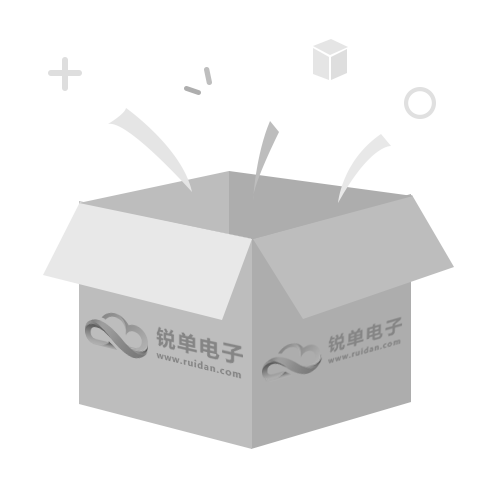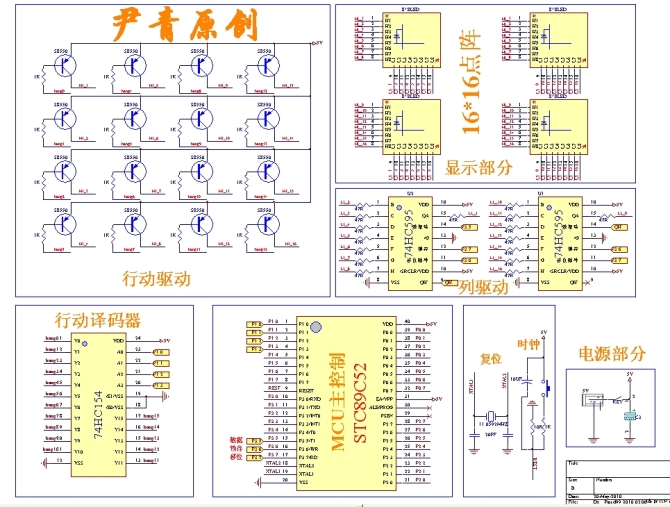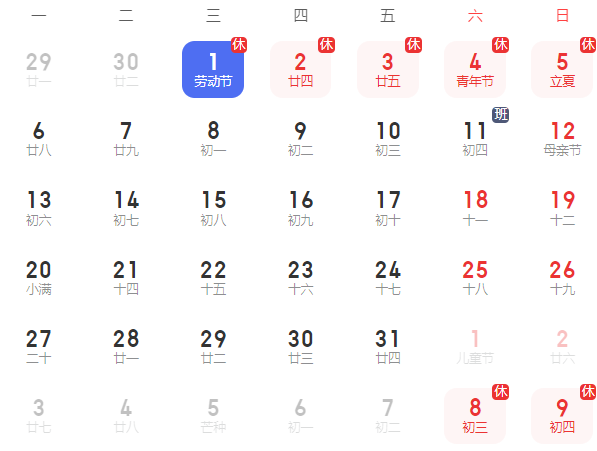仿生算法_糖尿病患者:说出仿生胰腺很有趣,但是现实检查怎么样?
时间:2023-07-20 16:07:00

仿生算法
The state of healthcare reporting is just abysmal. It's all link-bait. It's fun to write things like "Random Joe invents cure for diabetes in his garage, saves dying 5 year old." It's surely less fun to read them with you're the one with the disease.
医疗保健报告的状态简直糟透了。 都是链接诱饵。 写下诸如“ Random Joe在他的车库里发明治疗糖尿病的方法,拯救5岁的垂死者。 和患有这种疾病的人一起阅读肯定会减少乐趣。
IMPORTANT UPDATE: Scott (me) has now interviewed Dr. Steven Jon Russell, MD, PhD, a member of the Bionic Pancreas Team! Check out their interview at http://hanselminutes.com/431.
重要更新: Scott(我)现在采访Bionic Pancreas团队成员Steven Jon Russell博士,医学博士! 在http://hanselminutes.com/431上查看他们的采访。
It's time for medical journalists to try a little harder and pushback against editors that write headlines optimized for pageviews. The thing is, I've met a dozen General Practitioners who are themselves confused about how diabetes works, and link-bait journalism just ruins it for the public, too. I've received no fewer than 50 personal emails or FB posts from well-meaning friends this last week. "Have you heard? They've cured your diabetes with a bionic pancreas! They've cured your diabetes with a bionic pancreas!"
现在是时候让医学新闻记者更加努力地为那些为页面浏览量写头条新闻的编辑工作了。 事实上,我遇到了十几位全科医生,他们对糖尿病的工作原理感到困惑,链接诱饵新闻也破坏了它。 上周,我从好心朋友那里收到了不少于50封个人电子邮件或邮件FB帖子。 你听说过吗?他们用仿生胰腺治愈你的糖尿病!
I have been a Type 1 Diabetic for 20 years, I've worn an insulin pump 24 hours a day for the last 15 years (that's over 130,000 hours, in case you're counting), I'm a diabetes off-label body hacker with an A1C of 5.5%. What's that mean to you? I'm not a doctor, but I'm a hell of a good diabetic.
我已经是1型糖尿病患者20年了。在过去的15年里,我每天24小时佩戴胰岛素泵(如果你想数,超过1.3万小时)。我是糖尿病患者的黑客A1C为5.5%。 这对你意味着什么? 我不是医生,但是我是糖尿病患者。
I know what I'm talking about because I'm living it, and living it well. A doctor may be able to tell me to adjust my insulin every 3 months when I see them, but they aren't up with me at 4 am in a hotel in Germany with jet-lag telling me what to do when I'm having a low. Forgive me this hubris, but it comes from 75,000 finger pricks and yes, it hurts every time, and no, my insulin pump doesn't automatically cure me.
我知道我在说什么,因为我过开心。 看到医生后,医生可能会告诉我每三个月调整一次胰岛素,但凌晨4点,他们没有和我一起去德国的一家旅馆。React告诉我该怎么办。 原谅我的傲慢,但它来自7.5万根手指,是的,每次都疼,不,我的胰岛素泵不能自动治愈我。
Last year the FDA approved an Insulin Pump that shuts off automatically if it detects the wearer is having a low sugar. The press and the company itself called this new feature an "artificial pancreas." Nonsense. It's WAY too early to call this Insulin Pump an Artificial Pancreas.
去年,FDA一种胰岛素泵被批准,如果检测到佩戴者糖分低,就会自动关闭。 新闻界和公司本身称这一新功能为人造胰腺。 废话。 现在过早地称这种胰岛素泵为人工胰腺。
Now we are seeing a new "bionic" pancreas for which that the press is writing headlines like "A Father Has Invented a Bionic Organ to Save His Son From Type 1 Diabetes" and "Bionic Pancreas" Astonishes Diabetes Researchers."
现在,我们看到了一种新的仿生胰腺,新闻界正在写新闻标题,比如父亲发明了一种仿生器官来拯救儿子的1型糖尿病和仿生胰腺,这让糖尿病研究人员感到惊讶。
It's a great proof concept for a closed system based on dual insulin pumps (one with glucagon) and a high accuracy CGM managed by an iPhone. But that's a not a fun headline, is it?
对于基于双胰岛素泵高血糖素胰岛素泵)和由iPhone高精度的管理CGM封闭系统是一个很好的证明概念。 但这不是一个有趣的标题,对吧?
"Boston University biomedical engineer Ed Damiano and a team of other researchers published a study earlier this month detailing a system that could prevent these dangerous situations."
波士顿大学生物医学工程师埃德·达米亚诺(Ed Damiano)本月初与其他研究人员团队发表了一项研究,详细介绍了可以预防这些危险情况的系统。
Indeed, the study in the New England Journal of Medicine where Ed Damiano, Ph.D. is listed alongside Steven J. Russell, M.D., Ph.D., Firas H. El-Khatib, Ph.D., Manasi Sinha, M.D., M.P.H., Kendra L. Magyar, M.S.N., N.P., Katherine McKeon, M.Eng., Laura G. Goergen, B.S.N., R.N., Courtney Balliro, B.S.N, R.N., Mallory A. Hillard, B.S., David M. Nathan, M.D.
确实,《新英格兰医学杂志》中的研究由Ed Damiano博士担任。 与医学博士Steven J.Russell,医学博士Firas H.El-Khatib,医学博士MPA的Manasi Sinha,医学博士MPH的Kendra L.Magyar,医学工程硕士NP的NP.Katherine McKeon一起列出。 ,劳伦·戈尔根(Laura G. Goergen),BSN,RN,考特尼·巴里罗(Courtney Balliro),BSN,RN,马洛里·A·希拉德(Mallory A.Hillard),理学士,大卫·内森(David M.Nathan),医学博士
They are clearly all brilliant and of note. Let's break the study down.
他们显然都是杰出的。 让我们分解研究。
"...we compared glycemic control with a wearable, bihormonal, automated, “bionic” pancreas (bionic-pancreas period) with glycemic control with an insulin pump (control period) for 5 days in 20 adults and 32 adolescents with type 1 diabetes mellitus."
“ ...我们在20位成人和32位1型糖尿病青少年中,将血糖控制与可穿戴的,双激素的,自动的“仿生”胰腺(仿生胰腺期)与血糖控制和胰岛素泵(对照期)进行了5天的比较。 。”
They are trying to improve blood sugar control. That means keeping my numbers as "normal" as possible to avoid the nasty side-effects like blindness and amputation in the long-term with highs, and death and coma with lows. The general idea is that since my actual pancreas isn't operating, I'll need another way to get insulin into my system. "Bihormonal" means they are delivering not just insulin, which lowers blood sugar, but also glucagon, which effectively raises blood sugar. They tested this for 5 days on a bunch of people.
他们正在努力改善血糖控制。 这意味着我的数字应尽可能保持“正常”,以避免长期出现高位失明和截肢,低位导致死亡和昏迷等令人讨厌的副作用。 总体思路是,由于我的实际胰腺无法正常运转,因此我需要另一种将胰岛素注入系统的方法。 “双激素”表示它们不仅在输送胰岛素(可降低血糖),而且还输送胰高血糖素(可有效提高血糖)。 他们在一群人身上测试了5天。
"The device consisted of an iPhone 4S (Apple), which ran the control algorithm, and a G4 Platinum continuous glucose monitor (DexCom) connected by a custom hardware interface."
“该设备包括运行控制算法的iPhone 4S(Apple)和通过自定义硬件接口连接的G4白金连续血糖监测仪(DexCom)。”
I use a DexCom G4, by the way. It's a lovely device and it gives me an estimate of my blood sugar every 5 minutes by drawing a parallel between what it detects in the interstitial fluid of my own fat and tissues (not my whole blood) and then sends it wirelessly to a handset. I currently then make calculations in my head and decide (Note that keyword: decide) how much insulin to take. I then manually tell my Medtronic Insulin Pump how much insulin to take. The DexCom must be calibrated at least twice daily with a whole blood finger stick. Also, it's not too accurate on day 1, and can be wholly inaccurate after it's listed 7 day effectiveness range. But it's that keyword that this project is trying to help with. Decide. I have to decide, calculate, guess, determine. That's hard for me as an adult. It's near-impossible for an 8 year old. Or an 80-year old. Computers are good at calculating, maybe it can do this tedious work for us.
顺便说一下,我使用的是DexCom G4。 这是一个可爱的设备,它通过在我自己的脂肪和组织(而非全血)的组织液中检测到的东西之间进行比较,然后每隔5分钟对我的血糖进行估算,然后将其无线发送到手机。 我目前正在脑海中进行计算,并决定(注意:关键词)决定要摄取多少胰岛素。 然后,我手动告诉我的Medtronic胰岛素泵需要服用多少胰岛素。 必须每天用全血手指棒对DexCom进行至少两次校准。 另外,它在第1天的准确性不太高,在列出7天的有效范围后可能会完全不准确。 但是,这个项目正在尝试使用的正是该关键字。 决定。 我必须决定,计算,猜测,确定。 作为一个成年人,这对我来说很难。 对于8岁的孩子来说,这几乎是不可能的。 或80岁。 计算机擅长计算,也许它可以为我们完成这项繁琐的工作。
The thing is, with Type 1 Diabetes there's dozens of other factors to consider. How much did I eat? What did I eat? Am I sick? Does my stomach work? Do I digest slowly? Quickly? Do I have any acetaminophen in my system? Am I going jogging afterwards? Is this insulin going bad? Is the insulin pump's cannula bent, and dozens (I'm sure I could come up with a hundred) of other factors. Read Lane Desborough's paper (PPT as a PDF) on "Applying STPA (System Theoretic Process Analysis) to the Artificial Pancreas for People with Type 1 Diabetes" for a taste of what needs to be done.
事实是,对于1型糖尿病,还有许多其他因素需要考虑。 我吃了多少? 我吃了什么我病了吗我的胃能工作吗? 我会慢慢消化吗? 很快? 我的系统中有对乙酰氨基酚吗? 之后我要慢跑吗? 这种胰岛素会变坏吗? 胰岛素泵的插管是否弯曲,还有数十种(我敢肯定我可以提出一百种)其他因素。 阅读Lane Desborough的论文(PPT为PDF),以了解“将STPA(系统理论过程分析)应用于1型糖尿病患者的人工胰腺”,以了解需要做的事情。
The brilliance of this system - this "bionic" pancreas - is this...and these are MY words, no one else's:
这个系统的光辉-这种“仿生”的胰腺-是...这些是我的话,没有其他人的话:
The two pump bionic pancreas system gives you rather a LOT of insulin if needed (as if it's descending a plane quickly and dramatically) then it pulls you up nicely with a bit of glucagon (as if the pilot screamed pull up as he noticed the altitude change).
两泵仿生胰腺系统会在需要时为您提供大量胰岛素(好像它正在Swift急剧地下降),然后用一点胰高血糖素将您很好地拉起来(就像飞行员注意到海拔高度时尖叫着向上提起一样)更改)。
It's the addition of the glucagon to get you out of lows that is interesting. Typically Diabetics have a big syringe of glucagon in the fridge for emergencies. If you're super low - dangerously loopy - your partner can get you out of it with a big bolus of glucagon. But if you put glucagon in an insulin pump, you can deliver tiny amounts and now you are are moving the graph in two directions.
胰高血糖素的添加使您摆脱低谷很有趣。 通常,糖尿病患者在冰箱中装有大剂量的胰高血糖素注射器,以备不时之需。 如果您超低-危险地循环-您的伴侣可以用大量胰高血糖素使您摆脱困境。 但是,如果将胰高血糖素放入胰岛素泵中,则可以提供极少量的糖,现在您正在朝两个方向移动图形。
Think I'm kidding about the "pull up, pull up" analogy?
认为我在开玩笑“拉,拉”的类比吗?
Here's a snippet of a graph from page 15 of one of the Appendices (PDF). Note around 19:00, the blue bar going down, that's a lot of insulin. Then the BG numbers come down, FAST. Note the black triangle at around 20:20. That's "pull up, pull up" and a bolus of glucagon in red. And more, and more, in fact, there are many glucagon boluses keeping the numbers up, presumably happening while the subject sleeps. Then around 07:00 the numbers rise, presumably from the Dawn Effect, and another automatic insulin bolus (an overcorrection) and then more glucagon. It's a wonderfully controlled roller-coaster. This isn't using the word roller-coaster as a pejorative - that is the life I lead as a diabetic.
以下是其中一个附录(PDF)的第15页图表的摘要。 请注意,大约19:00,蓝色条下降,这表示胰岛素很多。 然后BG编号下降,FAST。 注意黑色三角形在20:20左右。 那就是“拉起,拉起”和一团红色的胰高血糖素。 实际上,越来越多的胰高血糖素药丸使这些数字增加,大概是在受试者睡觉时发生的。 然后在07:00左右,数字上升,大概是由于黎明效应,以及另一个自动胰岛素推注(过度校正),然后是更多的胰高血糖素。 这是一个完美控制的过山车。 这不是用过山车这个词作为贬义词,而是我作为糖尿病人的生活。
It's also not mentioned in the press that this system uses lot more insulin than I do today. A lot more, due to it's "dose and correct" algorithm's design.
在媒体上也没有提到该系统使用的胰岛素比我今天要多得多。 多很多,因为它的“剂量和正确的”算法的设计。
"Among the other 11 patients, the mean total daily dose of insulin was 50% higher during the bionic-pancreas period than during the control period (P=0.001);"
“在其他11名患者中,仿生-胰腺期的平均胰岛素日总剂量比对照组高50%(P = 0.001);”
UPDATE: I spoke to Dr. Russell, and I'm not entirely correct that this system uses a lot more insulin. The system didn't use much more insulin in diabetic kids who have very controlled diets, and was 50% higher in only some of the adults, presumably because (anecdotally) many of them were eating a lot more and "testing" the extents of the system.
更新:我与罗素医生交谈,我对这个系统使用更多的胰岛素并不完全正确。 该系统在饮食控制非常严格的糖尿病儿童中并未使用更多的胰岛素,仅在某些成年人中使用了高出50%的胰岛素,这大概是因为(偶然地)他们中的许多人正在进食更多并“测试”了系统。
I use about 40U a day, total. So we're looking at me using perhaps 60U a day with this system. As with any drug, though, insulin use has its side effects. It can cause fat deposits, scarring at injection sites, and we can become resistant to it. It'd be interesting to think about a study where someone's on 50% more insulin for years. Would that cause increases in any of these side effects? I don't know, but it's an interesting question. Should a closed system also optimize for doing its job with the minimum possible insulin. I optimize for that today, on my own, hoping that it will make a difference in the long run.
我总共每天大约使用40U。 因此,我们希望每天使用此系统使用60U。 但是,与任何药物一样,使用胰岛素也有副作用。 它可能导致脂肪沉积,注射部位疤痕形成,并且我们可能对此产生抵抗力。 想想一项研究,其中某人的胰岛素摄入量多年来增加了50%,这会很有趣。 这会增加这些副作用吗? 我不知道,但这是一个有趣的问题。 一个封闭的系统是否也应该以尽可能少的胰岛素来优化工作。 我今天就自己进行优化,希望从长远来看会有所作为。
But, glucagon isn't pump friendly as it is today. An unfortunate note that isn't covered in any of the press is that they are having to replace the glucagon every day. Juxtapose that with what I do currently with insulin. I keep my pump filled and swap out its contents and cannula (insertion site) every 4-7 days. Insulin itself can surface ~28 days at room temperature although it's most often refrigerated. Changing one of the pumps daily is a bummer, as they point out.
但是,胰高血糖素并不像今天这样友好。 这是不包括在任何媒体的不幸值得注意的是,他们有每天更换胰高血糖素。 与我目前使用胰岛素的情况并列。 我保持泵充满并每隔4-7天更换一次其内容物和套管(插入部位)。 胰岛素本身在室温下可沉降约28天,尽管最常冷藏。 他们指出,每天更换一台水泵实在是太可惜了。
"...the poor stability of currently available glucagon formations necessitated daily replacement of the glucagon in the pump with freshly reconstituted material."
“……目前可用的胰高血糖素形成物的稳定性差,需要每天用新鲜重构的材料替换泵中的胰高血糖素。”
It's early, people. It's not integrated, it's a proof of concept. It's impressive, to be sure, but Rube-Goldbergian in its hardware implementation. Two pumps, a Dexcom G4 inside a docking station, receiving BG data over RF from the transmitter, then the Dexcom wirelessly talking to an iPhone within another docking station.
太早了,人们。 它没有集成,只是概念证明。 可以肯定,这是令人印象深刻的,但是在硬件实现上却是Rube-Goldbergian。 两个泵,一个坞站内的Dexcom G4,通过射频从发射机接收BG数据,然后,Dexcom与另一个坞站内的iPhone无线通讯。
"Since a single device that integrates all the components of a bionic pancreas is not yet available, we had to rely on wireless connectivity to the insulin and glucagon pumps, which was not completely reliable."
“由于还没有一个集成了仿生胰腺所有成分的设备,我们不得不依靠与胰岛素泵和胰高血糖素泵的无线连接,这并不完全可靠。”
I'm not trying undermine, undercut, or minimize the work, it's super promising, but medical journalists need to seriously understand what's really going on here.
我不是要破坏,削弱或最小化工作,这是非常有前途的,但是医学记者需要认真地了解这里的实际情况。
Fast forward a few years, and there will very likely be an bi-hormonal "double" pump with both (more stable) glucagon and insulin that combines with a continuous glucose meter that provides the average Type 1 Diabetic with a reasonable solution to keep their numbers out of imminent danger. Great for kids, a relief for many.
几年过去了,很有可能会出现一个双激素的“双”泵,其中既有(更稳定的)胰高血糖素和胰岛素,又有一个连续的血糖仪为普通的1型糖尿病患者提供合理的解决方案,以保持他们的血糖水平。数字迫在眉睫。 非常适合孩子们,对许多人来说都是一种缓解。
But, just as pumps are today, it'll be USD$5000 to USD$10000. It will require insurance, and equipment, it'll require testing and software, it'll require training, and it won't be - it can't be - perfect. This is a move forward, but it's not a cure. Accept it for what it is, a step in the right direction.
但是,就像今天的水泵一样,价格在5000美元到10000美元之间。 它将需要保险和设备,它将需要测试和软件,需要培训,并且不会-不可能-完美。 这是向前迈进的一步,但不是治愈方法。 接受它是正确的一步。
Do I want it? Totally. But, journalists and families of diabetics, let's not overreact or get too ahead of ourselves. Does this mean I should eat crap and the machine will take care of it? No. I'm healthy today because I care to be. I work at it. Every day. As I'm typing now, I know my numbers, my trend-line, and my goal: stay alive another day.
我要吗? 完全。 但是,让记者和糖尿病患者家人不要React过度或过分领先。 这是否意味着我应该吃点废话,机器会照顾好它? 不,我今天很健康,因为我很想保持健康。 我在工作。 每天。 当我现在输入内容时,我知道我的数字,趋势线和目标:再过一天。
Read my article from 2001 - yes, that's 13 years ago - called One Guy, an Insulin Pump, and 8 PDAs:
阅读我2001年的文章-是的,那是13年前-叫做One Guy,一个胰岛素泵和8个PDA :
"I imagine a world of true digital convergence -- assuming that I won't be cured of diabetes by some biological means in my lifetime -- an implanted pump and glucose sensor, an advanced artificial pancreas. A closed system for diabetics that automatically senses sugar levels and delivers insulin has been the diabetics' holy grail for years. But with the advent of wireless technology and the Internet, my already optimistic vision has brightened. If I had an implanted device with wireless capabilities, it could be in constant contact with my doctor. If the pump failed, it could simultaneously alert me, my doctor, and the local emergency room, downloading my health history in preparation for my visit. If it was running low on insulin, the pump could report its status to my insurance company, and I'd have new insulin delivered to my doorstep the next day. But that's not enough. With Bluetooth coming, why couldn't my [PDA] monitor my newly implanted smart-pump?"
“我想象着一个真正的数字融合世界-假设我终生无法通过某种生物学手段治愈糖尿病-植入式泵和葡萄糖传感器,先进的人工胰腺。封闭的糖尿病患者系统可以自动感应多年来,血糖水平和胰岛素的输送一直是糖尿病患者的圣杯,但是随着无线技术和互联网的出现,我本来乐观的眼光就变得光明了,如果我拥有一个具有无线功能的植入设备,它可能会与我的医生,如果泵出现故障,它可以同时提醒我,我的医生和当地的急诊室,下载我的健康史,为我的就诊做准备;如果胰岛素不足,则可以向我的保险报告状况公司,第二天我就要把新的胰岛素送到家门口。但这还不够。随着蓝牙的问世,为什么[PDA]不能监视我新植入的智能泵?
Go an educate yourselves about the "We Are Not Waiting" movement. Hear how Scott Leibrand has a "DIY Artificial Pancreas" that's lowered his girlfriends average blood sugar dramatically using only an DexCom G4 and smart algorithms. You can make a change today, at your own risk, of course.
对“我们不在等待”运动进行自我教育。 听听Scott Leibrand如何拥有“ DIY人工胰腺”功能,仅使用DexCom G4和智能算法即可大幅降低女友的平均血糖。 当然,您今天可以进行更改,后果自负。
Read about the The DiabetesMine D-Data ExChange and how non-profit Tidepool is creating open source software and systems to make innovation happen now, rather than waiting for it. Get the code, join the conversation. Exercise, eat better, read, work. You can hack your Diabetes today. #WeAreNotWaiting
阅读有关DiabetesMine D-Data ExChange的信息,以及非营利性Tidepool如何创建开源软件和系统以使创新立即发生,而不是等待它。 获取代码,加入对话。 运动,吃得更好,读书,工作。 您可以立即修改您的糖尿病。 #WeAreNotWaiting
相关链接和著作 (Related Links and Writings)
It's WAY too early to call this Insulin Pump an Artificial Pancreas
现在将这种胰岛素泵称为人工胰腺还为时过早
The Sad State of Diabetes Technology in 2012
2012年糖尿病技术的悲惨境况
Scott's Diabetes Explanation: The Airplane Analogy
斯科特的糖尿病解释:飞机类比
YOUTUBE: How my diabetes equipment works
YOUTUBE:我的糖尿病设备如何工作
翻译自: https://www.hanselman.com/blog/diabetics-its-fun-to-say-bionic-pancreas-but-how-about-a-reality-check
仿生算法





